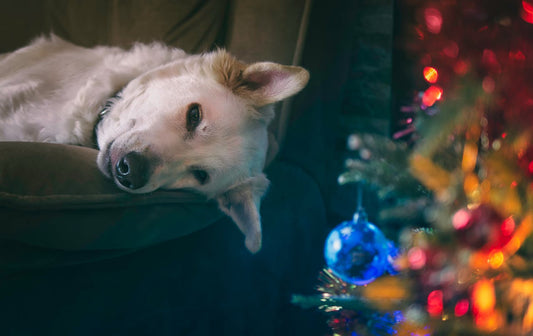Cats are known for their playful nature, and as a cat owner, it's important to provide them with toys that they will enjoy. However, not all cat toys are created equal, and it can be challenging to determine what toys your cat will like. In this article, we will explore what toys cats tend to enjoy and why.
Cats are natural hunters, and many of their favorite toys mimic prey. Toys that move quickly and unpredictably, such as wand toys with feathers or strings, are popular among cats. In addition, toys that make noise, such as crinkle balls or toys with bells, can also be appealing to cats. However, it's important to note that not all cats enjoy the same types of toys, and some may prefer more interactive toys that allow them to play with their owner.
When choosing toys for your cat, it's important to consider their age and activity level. Kittens may prefer toys that are smaller and easier to bat around, while older cats may enjoy toys that are softer and easier to grip. Additionally, cats that are more active may benefit from toys that provide a greater challenge, such as puzzle toys or toys that require them to work for their treats. By understanding what types of toys your cat is likely to enjoy, you can provide them with hours of entertainment and enrichment.
Types of Cat Toys
Cats are curious and playful creatures that love toys. Toys provide a great way for cats to exercise, relieve stress, and have fun. There are several types of cat toys, each with its unique features and benefits. Here are some of the most popular types of cat toys:
Interactive Toys
Interactive toys are designed to engage cats in play and mimic the experience of hunting prey. These toys often involve the owner and require them to move the toy around to keep the cat engaged. Examples of interactive toys include wand toys, laser pointers, and remote-controlled toys.
Wand toys consist of a stick with a toy attached to the end. The owner can move the stick around, causing the toy to move in unpredictable ways, which stimulates the cat's hunting instincts. Laser pointers are another popular interactive toy. The cat chases the laser's red dot, which moves around the room, providing an excellent workout for the cat.
Chase Toys
Chase toys are toys that cats can chase, pounce on, and bat around. These toys are great for cats that love to run and play. Examples of chase toys include balls, toy mice, and feather toys.
Balls are a classic cat toy that many cats love. They are perfect for cats that love to chase and bat things around. Toy mice are another popular chase toy. They are designed to look like real mice, and cats love to pounce on them and carry them around.
Puzzle Toys
Puzzle toys are designed to challenge cats mentally and physically. These toys often involve food or treats, which the cat must work to get out of the toy. Examples of puzzle toys include treat balls, puzzle feeders, and interactive puzzle toys.
Treat balls are toys that dispense treats as the cat plays with them. Puzzle feeders are toys that require the cat to work to get the food out of the toy. Interactive puzzle toys are toys that require the cat to solve a puzzle to get to the treat.
Comfort Toys
Comfort toys are toys that provide comfort and security to cats. These toys are often soft and cuddly and can help cats relax and feel safe. Examples of comfort toys include stuffed animals, heating pads, and catnip toys.
Stuffed animals are a popular comfort toy for cats. They provide a soft, cuddly companion for cats to snuggle up with. Heating pads are another popular comfort toy. They provide warmth and comfort to cats, which can be especially helpful for older cats or cats with arthritis. Catnip toys are also popular comfort toys. They contain catnip, which can help cats relax and feel calm.
Factors Influencing Toy Preference
When it comes to choosing toys for cats, it is important to consider their individual preferences. While every cat is unique, there are several factors that can influence their toy preferences. These factors include the cat's age, activity level, hunting instinct, and texture and sound preferences.
Cat's Age
A cat's age can play a significant role in their toy preferences. Kittens tend to be more active and curious, and may prefer toys that stimulate their senses, such as toys with feathers or bells. Older cats, on the other hand, may prefer toys that are softer and easier to manipulate, such as stuffed animals or toys filled with catnip.
Activity Level
A cat's activity level can also influence their toy preferences. Cats that are more active may prefer toys that allow them to run, jump, and play, such as laser pointers or interactive toys. More laid-back cats may prefer toys that they can play with on their own, such as stuffed animals or puzzle toys.
Hunting Instinct
Cats are natural hunters, and their toy preferences can be influenced by their hunting instinct. Toys that mimic the movement and sound of prey, such as feather wands or toys that make rustling noises, can be particularly appealing to cats. Some cats may also prefer toys that they can "capture" and carry around, such as small stuffed animals or balls.
Texture and Sound Preferences
Cats are known for their sensitivity to texture and sound, and these preferences can also influence their toy choices. Some cats may prefer toys that are soft and plush, while others may prefer toys that are rough and textured. Cats may also have preferences for certain sounds, such as toys that make crinkling or rustling noises. It is important to observe your cat's reactions to different toys to determine their individual preferences.






